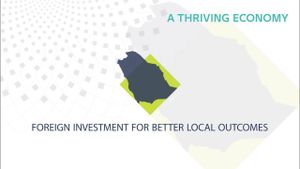On February 1, 2025, India's Finance Minister Nirmala Sitharaman revealed the nation's largest tax cuts to date, injecting 1 trillion rupees (approximately $11.5 billion) back to middle-class citizens with the aim of invigoriting the slowing economy. Individuals earning up to 1.2 million rupees annually will now enjoy exemptions from income tax, raising the previous cap from 700,000 rupees. This pivotal change is expected to impact around 10 million individuals, raising the total number of people who no longer need to pay income tax to 60 million, which constitutes nearly 74% of all taxpayers.
Sitharaman highlighted the significance of the budget, stating, "The new structure will reduce taxes on middle class and leave more money in their hands, boosting household consumption, savings and investment." This initiative is seen as part of the government's larger strategy to counteract persistent economic challenges exacerbated by slowing growth rates and rising geopolitical tensions globally.
The backdrop to these cuts has been troubling: India's economy is anticipated to grow at its slowest pace over four years, with projections hovering around 6.3% to 6.8% for the upcoming fiscal year. Factors contributing to this deceleration include low consumer demand and weak private investment, stemming from the effects of high inflation and stagnant wages.
To align with its fiscal targets, the government aims to bring the budget deficit down from 4.8% of GDP to 4.4%, slightly lower than previous estimates. The planned capital expenditure for the upcoming fiscal year is projected to grow by 10%, reaching about 11.21 trillion rupees, following under-expenditure during the current fiscal year. Although income tax cuts will result in significant revenue loss, the government seems to be banking on increased household spending to stimulate the economy.
Observations from economists shed light on the nuances surrounding these cuts. Sakshi Gupta, from HDFC Bank, pointed out, "This tax cut is likely to spur consumer demand and savings by the middle class." It emphasizes the belief among government officials and experts alike: boosting disposable incomes can trigger heightened consumer spending, which is fundamentally necessary for economic recovery.
The move is interpreted as the government's acknowledgment of the shortcomings of earlier strategies aimed at stimulating growth, particularly the corporate tax cuts introduced back in 2019. Many analysts agree the timing was off, proposing instead an earlier focus on income tax cuts to stimulate demand. Recent data suggests growing national debt, with household debt reaching unprecedented levels, emphasizing the need for actions targeting both personal income and consumption patterns.
This latest budget reflects attempts at economic course-correction following years of capital-intensive investments over genuine job creation. Many of the jobs generated have skewed heavily toward self-employment and low-income sectors, leading to increased indebtedness among families. The structural reforms undertaken over the past years have met with mixed reactions, often failing to keep up with the demands of the populace.
While reversing the consumer demand downturn is now viewed as the priority, this shift also brings caution against potential inflationary pressures, particularly if increased consumption demands are met by imports rather than home-produced goods. This can exacerbate deficits or drive inflation higher, posing new challenges for policymakers.
The government hopes the tax cuts will act as catalysts, encouraging companies to invest more actively, creating jobs and contributing to long-term economic stability. The ultimate effectiveness of these changes will depend not only on consumer spending patterns but also on the broader economic framework capable of supporting sustainable growth moving forward.
Even with these ambitious proposals, some experts remain skeptical. The scale of tax relief may prove insufficient if overall income growth doesn't accelerate alongside consumer spending. Notably, the total number of taxpayers is relatively small compared to India's vast population, pointing to larger systemic challenges yet to be addressed.
Therefore, as India steps onto this new economic path, the upcoming years will be pivotal. Observers will be closely monitoring the effects of these tax reforms against a backdrop of global uncertainties and domestic challenges.



